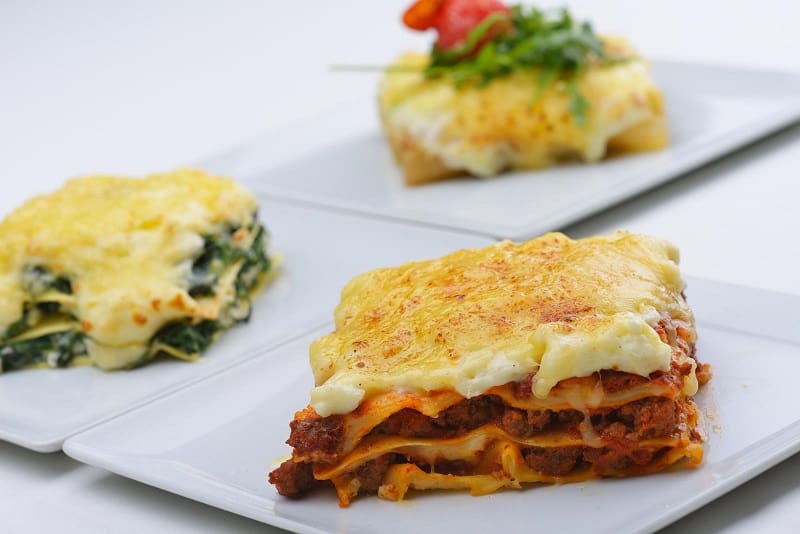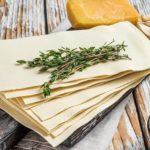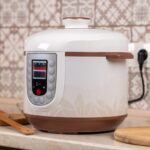There’s no doubt about it, making lasagne from scratch can be something of an artform, and one that often isn’t truly mastered unless Italian blood runs through your veins!
A common problem when cooking lasagne is the pasta sheets often remain hard, even after fully cooking the dish.
We look at why lasagne sheets are still hard after cooking – and how to prevent this.
Preventing Hard Lasagne Sheets
Fortunately, the trick to preventing your sheets of lasagne from remaining hard (even after thoroughly cooking), is very simple. All you need to do is maintain a good level of moisture throughout the cooking process.
There are two ways of doing this:
- Make sure you use plenty of sauce to keep the sheets moist.
- Pre-soak the sheets in salted boiling water. You won’t need to do this for long, as you’re aiming to loosen the pasta – not cook it.
Simply put, if there isn’t enough moisture in contact with your lasagne sheets, they will dry out and become hard and chewy in texture.
A nifty trick if you plan to pre-soak your pasta sheets is to add a few drops of cooking oil to the boiling water. This will stop the sheets from sticking together (another common lasagne bugbear!)
Another way to ensure your lasagne sheets don’t harden during the cooking process is to make sure your dish is covered with a lid or silver foil during baking.
If you wish to colour the top of your lasagne, do so near the end of cooking for a short time only.
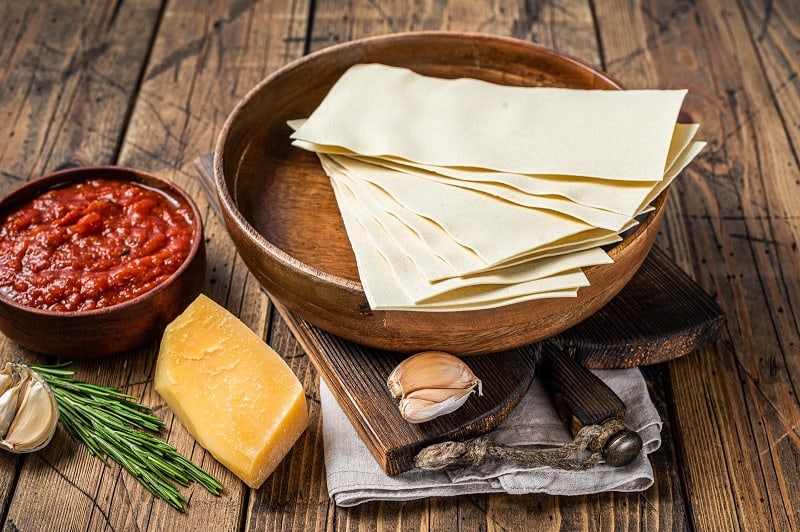
Lasagne: A Brief History
Naturally, lasagne originated from the land of deliciousness, otherwise known as Italy.
Hailing from Bologna in the Emilia-Romagna area of Italy, lasagne dates back to the Middle Ages, making it one of the oldest types of pasta dishes, with the earliest written recording dating back to circa 1282.
Typical lasagne ingredients include durum wheat (for the sheets, which are usually coated in egg wash), ground meat (usually beef or chicken), and cheese. Nowadays, there are vegetarian and vegan lasagne options too.
As a pasta type, lasagne sheets come under the category of ribbon pasta.
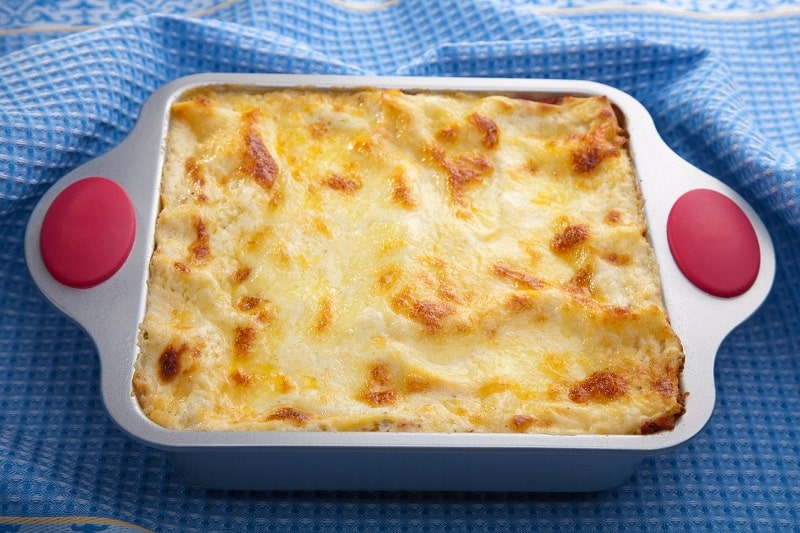
Lasagne vs Lasagna: What’s the Difference?
In terms of the meal itself, there is no difference between lasagne and lasagna. The word ‘lasagne’ is technically the plural version of the type of pasta used within the dish, and the word ‘lasagna’ is usually referred to in American-English or Italian-American.
Lasagne Variations
Like many Italian dishes, lasagne lends itself to flexibility and creativity. You can experiment with different meat (or veggie) fillings and different cheeses. It can be dairy-free and/or gluten-free too. You can enrich it with all of your favourite foods, herbs, and spices. The sky’s the limit with lasagne! Some delicious lasagne variations include:
- Pesto, ricotta, and chargrilled vegetable lasagne
- Mushroom, pumpkin, and blue cheese frying pan “lazy” lasagne
- Cauliflower and caramelised onion lasagne
- Pumpkin, ricotta, and prosciutto lasagne with chilli
- Chicken lasagne primavera

How to Make Lasagne Sheets at Home
Making pasta from scratch is easy, fun, and super-resourceful (make a big batch and freeze it to save on the grocery bill!) – and you won’t need to fork out for a swanky pasta maker either!
What You’ll Need:
- 0:0 flour
- Eggs
- 1 pinch salt
- 1 tablespoon water, as needed
- A rolling pin
- A large plastic bowl
- A baking tray/dish
- Clean tea towel
How to make it:
- Lightly dust your countertop with 0:0 flour.
- Make a dough using the above ingredients (plan the amount according to how many mouths you’re feeding!)
- Knead the dough with your hands by flattening into a ball, stretching it, and folding the top towards the centre. Repeat until the dough is soft, loose, and smooth. This usually takes around ten minutes.
- Shape the dough into a ball again, put it into a bowl and cover with cling-film. Refrigerate your dough until it’s firm. This can take anything from 30 minutes to 1 hour (or longer) depending on your fridge settings and the time of year.
- Divide the dough into equal portions and flatten each with your hands. Re-dust your counter with flour, if needed, and roll your dough out using a rolling pin until flat and even.
- Cut the pasta into rectangular sheets to fit your baking dish. Transfer the sheets onto a (floured) clean tea towel and let the dough air-dry.
- Use fresh or freeze.

Clara is a freelance writer and former chef. Though she may have hung up her apron, her love of food and cooking is still going strong! When she’s not whipping up a verbal storm, she’ll be in her kitchen sipping wine and whipping up a culinary storm.

